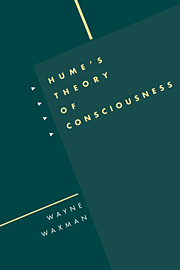Introduction: A false reason or none at all
Published online by Cambridge University Press: 11 September 2009
Summary
Hume's “dangerous dilemma”
Hume's survey of human understanding in A Treatise of Human Nature ends with a vertiginous descent into despair. “The intense view of these manifold contradictions and imperfections in human reason has so wrought upon me, and heated my brain, that I am ready to reject all belief and reasoning, and can look upon no opinion even as more probable or likely than another” (T268). Reason, which putatively sets man apart from and above his fellow creatures, exposes itself as nothing but “the general and more establish'd properties of the imagination” (T267); our sole and entire counterweight to “all the trivial suggestions of the fancy,” which are so “often contrary to each other” and “lead us into such errors, absurdities, and obscurities, that we must at last become asham'd of our credulity,” is thus simply fancy in another guise. Worse, this ostensibly “rational” brand of imagination, “when it acts alone, and according to its most general principles, entirely subverts itself, and leaves not the lowest degree of evidence in any proposition, either in philosophy or common life. We save ourselves from this total scepticism only by means of that singular and seemingly trivial property of the fancy, by which we enter with difficulty into remote views of things, and are not able to accompany them with so sensible an impression, as we do those, which are more easy and natural” (T267f.).
- Type
- Chapter
- Information
- Hume's Theory of Consciousness , pp. 1 - 24Publisher: Cambridge University PressPrint publication year: 1994



